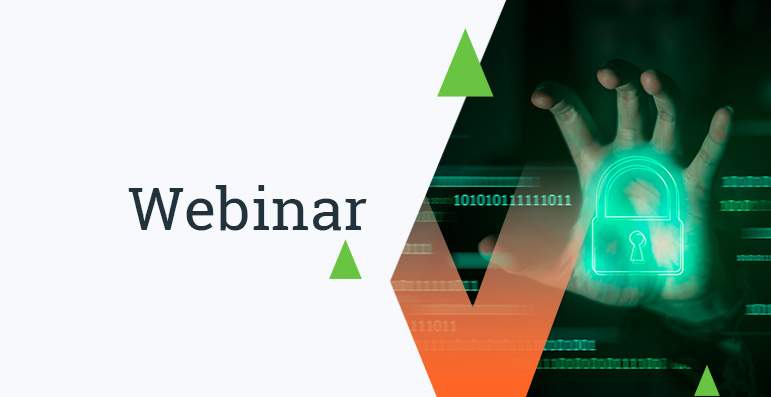How to Recover From a Ransomware Attack?
In the current digital landscape, organizations face numerous cybersecurity challenges, and among them, ransomware has emerged as a significant cause for concern. This malicious software wreaks havoc, impacting individuals and businesses on a massive scale.
Ransomware can be described as harmful software that takes over a computer, holding it “hostage” by encrypting the user’s data or locking them out entirely. The perpetrator then demands a ransom, typically in exchange for a decryption key to regain access.
For businesses, this poses the risk of losing vital data and experiencing significant operational setbacks. Furthermore, failure to comply with data protection regulations, such as the GDPR, can lead to significant monetary fines.
However, if an organization is properly prepared, a Ransomware attack can be easier to recover from. By adopting a proactive and informed strategy, it’s possible to navigate the aftermath and resume regular operations with minimal disruption.
Understanding Ransomware-The Ransomware Threat Landscape
Ransomware comes in various forms, each distinct in its approach and objectives. Some variants aim at individuals, while others have the capacity to disrupt expansive corporate networks. The spectrum of these threats spans from basic infections that simply freeze your screen and ask for a ransom, to intricate malware that covertly encrypts your files, demanding payment through hard-to-trace methods like Bitcoin.
Ransomware’s trajectory has seen it grow from mere digital nuisances to powerful tools for cyber extortion. With each passing year, cybercriminals enhance their abilities – implementing intricate encryption techniques, creating ‘ransomware-for-hire’ schemes, and even harnessing the power of AI to improve their attacks.
This rising tide of sophistication emphasizes the gravity of ransomware, stressing the importance of solid defensive mechanisms and well-thought-out recovery plans. The deeper our insights into ransomware’s complexities, the better we can steer clear of its dangers.
Ransomware Impact, Costs, and Targets
The repercussions of ransomware assaults on enterprises can be financially severe. It’s not just about the direct ransom amounts, which could be anywhere from several hundred dollars to several million. There are also secondary expenses to think about, such as operational disruptions, decreased output, harm to the company’s reputation, and potential legal penalties if customer data is exposed.
In 2022, ransomware incidents set companies back about $4.35 million. This doesn’t include further costs like system recovery, enhancing cybersecurity defenses, and possible legal consultations, which can elevate the overall expense.
Certain sectors are especially appealing to malicious cyber attackers. Healthcare, education, and government institutions frequently find themselves in the crosshairs due to the critical nature of their information and perceived vulnerabilities concerning extended operational disruptions. Industries like manufacturing, financial services, and even some small businesses are not exempt.
The diverse range of affected industries emphasizes that every organization, no matter its scale or sector, should be aware of the ransomware threat. The real question isn’t about whether you’ll be attacked but when it will happen. Fortifying cybersecurity defenses, training staff on potential risks, and crafting a detailed strategy for handling incidents are essential steps in preparing for and mitigating a potential ransomware assault.
Planning for Ransomware Attack
Having a robust security strategy can not only lessen the aftermath of an attack but also hasten the recovery process. It’s vital to craft best practices for bouncing back from these threats.
Tevora does a great job helping organizations to simplify their approach to cybersecurity readiness. As a leading name in cloud data management and security, Tevora offers an all-encompassing strategy against ransomware threats. Their method is built on five pivotal components:
- Preparation
- Prevention
- Detection
- Assessment
- Recovery
Steps for Ransomware Attack Planning
Ransomware attacks can have devastating consequences for businesses, regardless of their size. This is why it’s imperative to establish a robust strategy beforehand. Organizations should consider the following essential steps to ready themselves:
Preparation
To tackle ransomware effectively, a strong security foundation is crucial. Begin by crafting a detailed action plan that lists out the necessary steps when confronted with a ransomware threat. Ensure that every key player – IT, legal, communications, and executive branches – are involved in this strategy.
Additionally, staging mock drills or scenarios will improve organizational readiness. These scenarios, or Adversary Simulations, are creatively designed to mimic real-life scenarios, including the social engineering tricks that often catch organizations by surprise. Mock drills are invaluable in acquainting team members with their designated duties, ensuring a swift and confident response even in high-stress moments.
Prevention
Stopping ransomware attacks in their tracks requires leveraging a mix of specialized tools that can detect and isolate harmful software. This includes using antivirus applications, setting up firewalls, deploying intrusion detection systems, and utilizing email filters to act as barriers against potential threats.
An equally significant step is to keep every system current with the latest security updates. These patches are essential in sealing any possible security loopholes that cybercriminals might use to their advantage, bolstering your fortifications against potential breaches and ensuring your critical data remains secure.
Detection
Early detection of a ransomware attack can significantly limit the damage it causes. Monitoring user activities and network traffic is essential for this purpose, as it can reveal suspicious behaviors that could indicate a breach.
It is also important to access reliable security logs to quickly identify and investigate any unauthorized activities. This provides crucial insight into the details of an attack, enabling organizations to understand its root causes better and develop effective countermeasures.
Assessment
Upon realizing a ransomware attack, it becomes imperative to quickly gauge its impact. This involves delving deep to pinpoint the affected systems and files, as well as discerning how the attacker gained access to your network.
Understanding these nuances aids in crafting a holistic strategy to recuperate, fortify your digital defenses, and reduce the likelihood of future attacks.
Recovery
With the threat contained, the focus shifts to data retrieval. Having consistent backups proves invaluable here.
To ensure safety, pull data from your most recent uncorrupted backup. Before doing this, clean your systems rigorously to eliminate any lingering traces of the ransomware.
Elements of an Effective Ransomware Recovery Plan
An effective ransomware recovery plan is crucial to mitigate the potential damage and downtime caused by a ransomware attack. This plan should address everything from initial detection to final data restoration. Here are the key elements of an effective ransomware recovery plan:
Identifying Trigger Files and Understanding the Attack Style
To effectively combat a ransomware assault, start by pinpointing compromised files and deciphering the attack’s objective. This entails figuring out the specific encrypted files, identifying the ransomware’s delivery mechanism (was it an email attachment, a malicious link, or an exploit kit?), and determining the ransomware variant. Understanding this data can shape your immediate actions and aid in restoring operations.
Disconnecting Vulnerable Devices and Studying Ransomware Characteristics
When you sense a ransomware breach, promptly sever connections of the implicated devices from your main network, stopping further spread of the malware. With the devices quarantined, shift your focus to dissecting the ransomware’s traits. This analysis can unveil its propagation method, target files, and any residual markers, which might provide clues for its removal.
Implementing Data Restoration Through Backup Systems
Once you’ve successfully contained and eliminated the ransomware, it’s time to dive into the data recovery phase. This is where having a solid backup strategy is essential. Pulling data from an unaffected recent backup can dramatically reduce data setbacks, helping you resume operations quickly.
Still, it’s essential to verify your backups are free from ransomware. Prior to starting the recovery, double-check your backups for any irregularities or indications of contamination. Only when certain of their integrity should you start the restoration.
Prevention of Ransomware Encrypted Files
Ransomware typically employs strong encryption techniques to deny users access to their data. But, there are measures you can adopt to minimize the chance of these encryptions taking place or at least lessen their impact.
Regular Backups for Quick Data Restoration
The cornerstone of ransomware defense is regular data backups. By maintaining updated backups, even if ransomware encrypts your files, you’ll have the ability to retrieve them from your most recent backup, bypassing the need to pay a ransom.
Consider storing these backups at a location distinct from your primary network – either offline or on a cloud service equipped with version control. This ensures that even if your central system is breached, your backup remains untouched. Make it a habit to periodically verify your backup procedures to guarantee smooth data recovery when needed.
Enforcement of Strong Security Measures and Vigilant Policies
Implement robust security measures to protect your systems from ransomware. This includes keeping your operating system and all software up-to-date, as updates often include patches for security vulnerabilities that ransomware could exploit.
Use strong, unique passwords and two-factor authentication to secure your systems further. Additionally, limit the number of people with administrative access to your systems, as accounts with high-level privileges are prime targets for ransomware attacks.
Create vigilant policies around data security and train your staff to adhere to them. This should include guidelines on safe internet usage, such as avoiding untrusted websites and downloads.
Caution With Suspicious Emails, Links, and Attachments
Phishing emails are one of the most common ways ransomware is delivered. These emails often contain malicious links or attachments that, when clicked or opened, can install ransomware on your system.
Educate your team about the signs of phishing emails, such as poor grammar, misspelled words, and generic greetings. Encourage them to avoid clicking links or opening attachments in unsolicited emails, especially from unknown senders. Implementing an email filter can also help to block these types of threats.
Recovery Strategies from Ransomware Attacks
When faced with a ransomware attack, a solid recovery strategy can drastically minimize the damage and help your organization bounce back quickly. Here are some key strategies for recovering from a ransomware attack:
Deployment of Immutable Backups
Immutable backups are a powerful tool in the fight against ransomware. These backups cannot be modified or deleted during a specified retention period. Even if ransomware infiltrates your network, it cannot encrypt or delete these backups, allowing you to restore your data from a clean source.
Regularly creating immutable backups should be a core part of your cybersecurity strategy. Remember to store these backups in a secure, offsite location or a cloud service supporting immutability.
Implementing Strict IT Security Policies
Strong security policies can go a long way in preventing ransomware attacks and aiding recovery efforts. These policies should cover access controls, password management, software updates, and incident response procedures.
Training your employees to follow these policies is crucial. The more your team understands the risks of ransomware and how to avoid them, the less likely they are to expose your systems to an attack inadvertently.
Dedicating Backups for Critical Services
Services like Microsoft 365 and AWS are often integral to business operations, making them prime targets for ransomware attacks. Having dedicated backups for these services can ensure you can restore functionality during an attack.
Choose a backup solution with automatic and frequent backups, granular recovery options, and strong security features. This will provide extra protection for your critical services and data.
Reporting the Attack, Wiping Affected Systems, and Restoring Data
In the event of a ransomware attack, it is crucial to promptly notify your IT department or a cybersecurity expert. They possess the expertise to quickly mitigate the attack, safeguarding your systems and data from further compromise.
Once the attack has been contained, affected systems should be wiped clean to remove any traces of the ransomware. Only then should data restoration begin, using your clean backups. Remember to verify the integrity of your backups before starting the restoration process to ensure the ransomware hasn’t compromised them.
Combating Ransomware: Prevention, Recovery, and Mitigation
Ransomware attacks can be devastating for businesses, both in terms of data loss and financial costs. But there are steps you can take to protect your organization from these threats.
By following the prevention, recovery, and mitigation tips outlined above, you can significantly reduce the likelihood of a ransomware attack on your systems and minimize the damage if one does occur.




